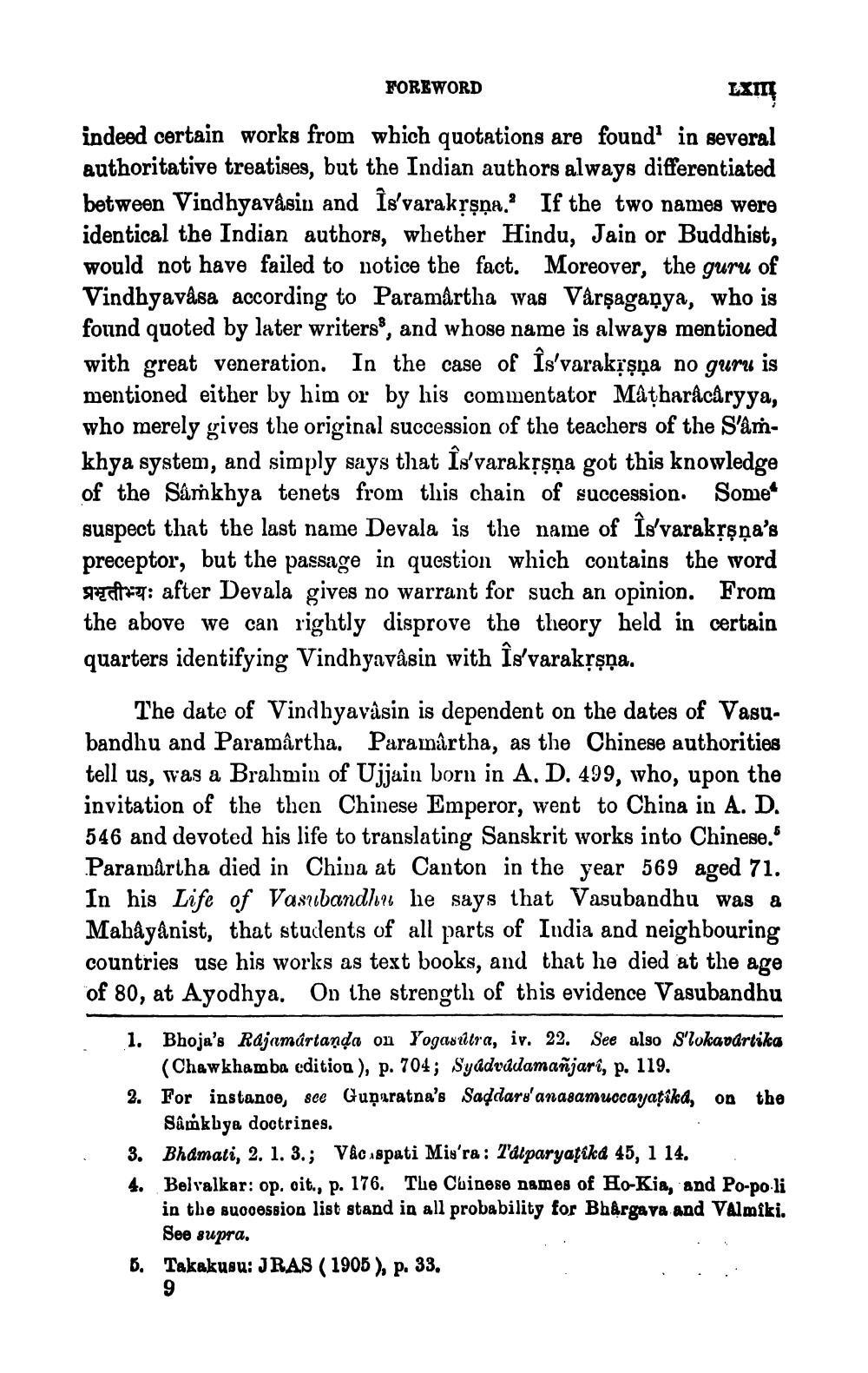________________
FOREWORD
LXI indeed certain works from which quotations are found' in several authoritative treatises, but the Indian authors always differentiated between Vindhyavasin and Îs'varakļşņa. If the two names were identical the Indian authors, whether Hindu, Jain or Buddhist, would not have failed to notice the fact. Moreover, the guru of Vindhyavåsa according to Paramartha was Varşaganya, who is found quoted by later writers, and whose name is always mentioned with great veneration. In the case of Ís'varakrşņa no guru is mentioned either by him or by his commentator Mâțharacäryya, who merely gives the original succession of the teachers of the S'amkhya system, and simply says that Is varakļşņa got this knowledge of the Samkhya tenets from this chain of succession. Some suspect that the last name Devala is the name of Îs'varakļşņa's preceptor, but the passage in question which contains the word ganitza: after Devala gives no warrant for such an opinion. From the above we can rightly disprove the theory held in certain quarters identifying Vindhyavâsin with Îs'varakļşņa.
The date of Vindhyavâsin is dependent on the dates of Vasu. bandhu and Paramârtha. Paramârtha, as the Chinese authorities tell us, was a Brahmin of Ujjain born in A. D. 499, who, upon the invitation of the then Chinese Emperor, went to China in A. D. 546 and devoted his life to translating Sanskrit works into Chinese. Paramartha died in China at Canton in the year 569 aged 71. In his Life of Vasubandhu he says that Vasubandhu was a Mahâyânist, that students of all parts of India and neighbouring countries use his works as text books, and that he died at the age of 80, at Ayodhya. On the strength of this evidence Vasubandhu 1. Bhoja's R&jamúrtamda on Yogasiltra, iv. 22. See also S'lokavdrtika
(Chawkhamba edition ), p. 704; Syddvádamañjarî, p. 119. 2. For instanoe, see Guņıratna’s Saddars'anasamuccayaţika, on the
Sâmkhya doctrines. 3. Bhamati, 2. 1. 3.; Vacaspati Miséra : l'alparyaţika 45, 1 14. 4. Belvalkar: op, oit., p. 176. The Chinese names of Ho-Kia, and Po-po-li
in the succession list stand in all probability for Bhargava and Valmiki.
See supra. B. Takakusu: JRAS (1905), p. 33.
9




